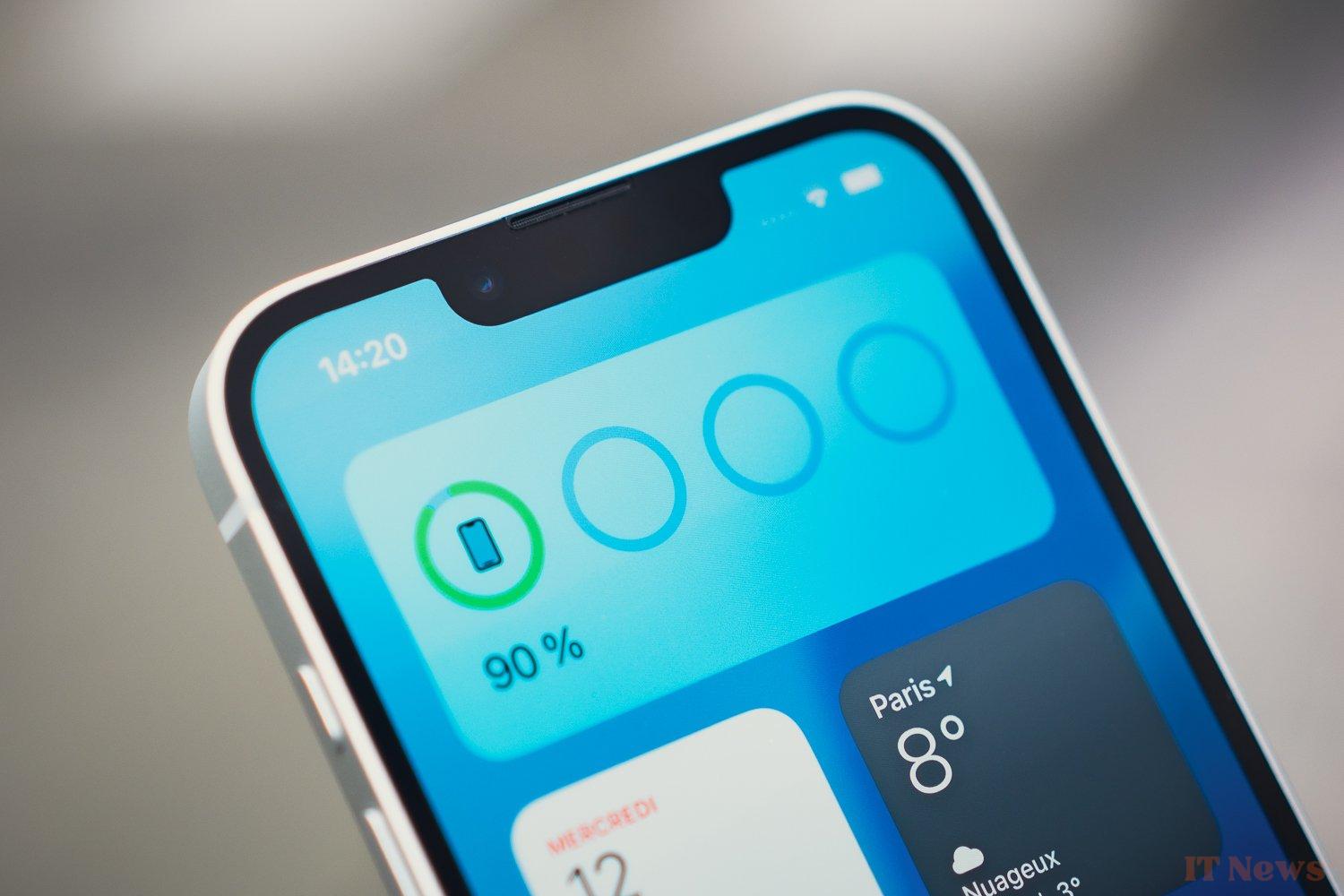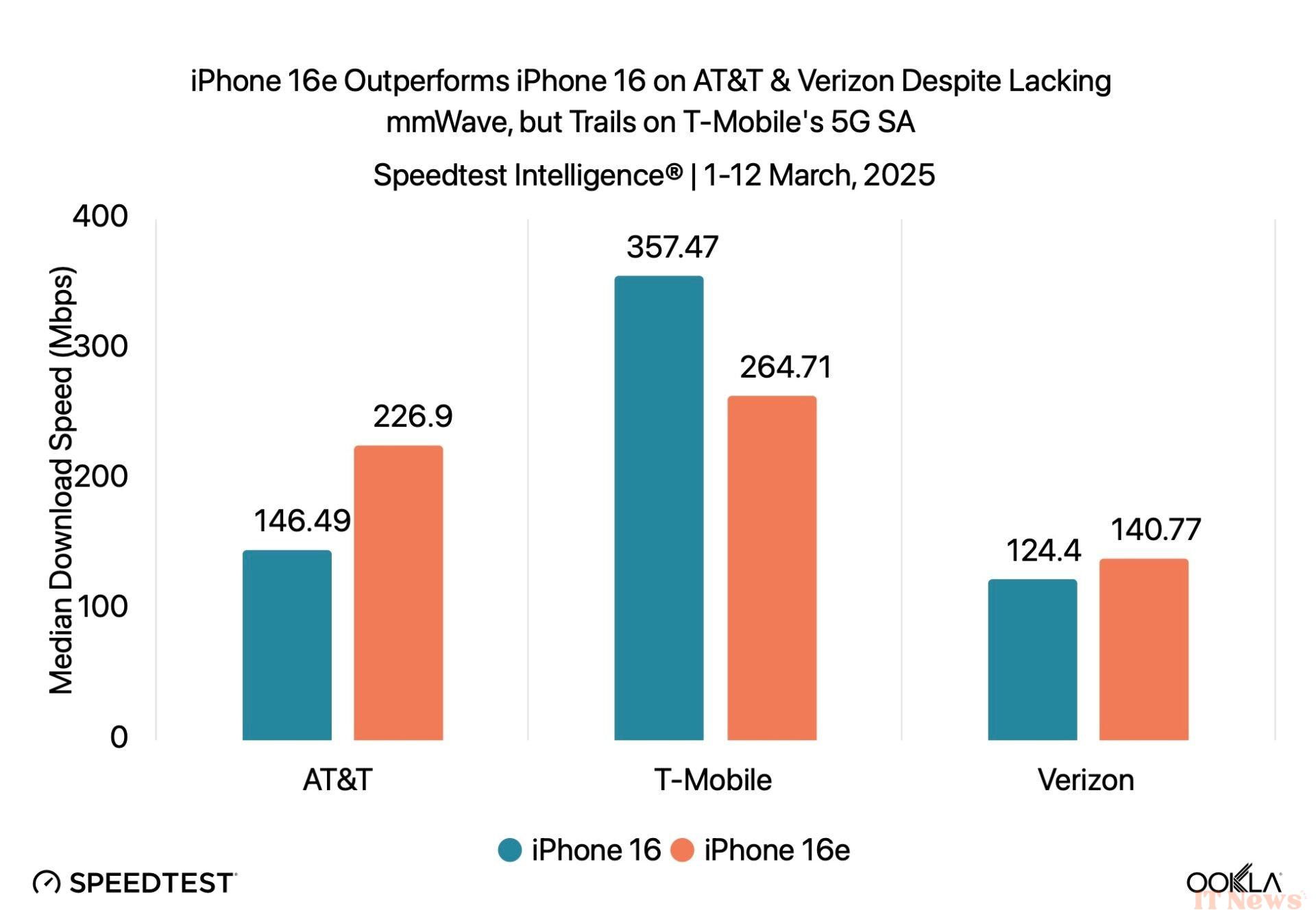The C1 chip was a surprise for the head of the iPhone 16th. The new entry point into the iPhone family (we dare not call the device "affordable") actually integrates the first modem signed Apple, a chip capable of connecting to cellular networks — an obviously essential component for a smartphone! This development cost very expensive for the manufacturer, which has invested billions of dollars to cut its dependence on Qualcomm modems.
Encouraging results
Was the result worth it? There was no disaster or huge bug after the launch of the iPhone 16e, which is already a success. Ookla, which specializes in analyzing the performance of internet and mobile networks (we owe it the Speedtest tool), confirms the good provisions of the C1. Compared to an iPhone 16 equipped with With a Qualcomm modem, the iPhone 16th has the luxury of offering faster download speeds than its big brother on the networks of American operators AT&T and Verizon. The device is, however, less comfortable on the T-Mobile network.
The iPhone 16e also offers better performance for the 10% of users with the slowest speeds (90% of users have a better connection than this group). For the 90th percentile, it is In other words, among the top 10% of users, the iPhone 16 outperforms the 16th. In other words, the C1 chip can't reach the same top speeds as its Qualcomm rival.
The chip's performance on the T-Mobile network is partly because the carrier has already enabled 5G Standalone (SA), the "true" 5G. Apple will have to work on this, as this 5G+ is starting to Be familiar to users: in France, Orange activated it at the beginning of March.
Another important difference: the C1 does not support millimeter wave 5G (mmWave), an ultra-fast 5G but also very difficult to receive. Only iPhones sold in the United States are mmWave compatible, with the current exception of the iPhone 16e.
Apple has praised the merits of the C1 chip, highlighting its more efficient battery management. The iPhone 16e has nothing to envy other models in this regard. These results are encouraging for a first attempt. But it's understandable why Apple chose to introduce the C1 on its mid-range iPhone, and why the iPhone 17 and 17 Pro will continue to feature a Qualcomm modem (the iPhone 17 Air is expected to work with the new chip, however). Until the C2 arrives...
Source: Ookla




0 Comments